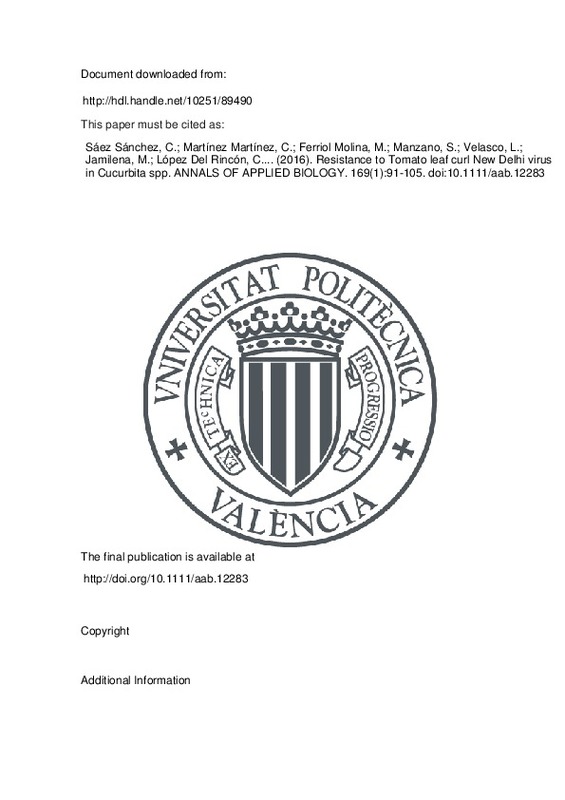JavaScript is disabled for your browser. Some features of this site may not work without it.
Buscar en RiuNet
Listar
Mi cuenta
Estadísticas
Ayuda RiuNet
Admin. UPV
Resistance to Tomato leaf curl New Delhi virus in Cucurbita spp
Mostrar el registro completo del ítem
Sáez Sánchez, C.; Martínez Martínez, C.; Ferriol Molina, M.; Manzano, S.; Velasco, L.; Jamilena, M.; López Del Rincón, C.... (2016). Resistance to Tomato leaf curl New Delhi virus in Cucurbita spp. ANNALS OF APPLIED BIOLOGY. 169(1):91-105. https://doi.org/10.1111/aab.12283
Por favor, use este identificador para citar o enlazar este ítem: http://hdl.handle.net/10251/89490
Ficheros en el ítem
Metadatos del ítem
| Título: | Resistance to Tomato leaf curl New Delhi virus in Cucurbita spp | |
| Autor: | Sáez Sánchez, Cristina Martínez Martínez, Cecilia Manzano, S. Velasco, L. Jamilena, M. | |
| Entidad UPV: |
|
|
| Fecha difusión: |
|
|
| Resumen: |
[EN] Tomato leaf curl New Delhi virus (ToLCNDV) is a bipartite begomovirus (family
Geminiviridae) first reported in India and its neighbouring countries. ToLCNDV
severely affects zucchini crop (Cucurbita pepo) in the ...[+]
|
|
| Palabras clave: |
|
|
| Derechos de uso: | Reserva de todos los derechos | |
| Fuente: |
|
|
| DOI: |
|
|
| Versión del editor: | http://doi.org/10.1111/aab.12283 | |
| Código del Proyecto: |
|
|
| Agradecimientos: |
|
|
| Tipo: |
|







![[Cerrado]](/themes/UPV/images/candado.png)


